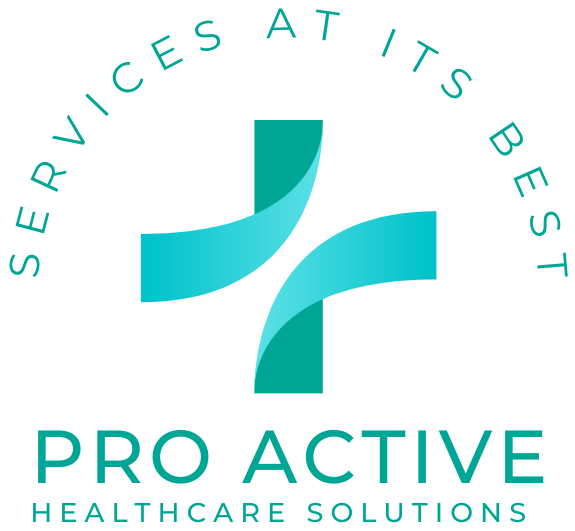
CMS Released The Final MIPS Rule- What Now?-PHCSS
The final MIPS (Merit-Based Incentive Payment System) rule, which was just released by CMS (Centers for Medicare & Medicaid Services), represents a major turning point in the constantly changing healthcare market. It is important to investigate what this means for practices and practitioners alike as healthcare professionals get ready to comprehend and abide by the new standards. At PHCSS, we have already started working on the rules laid by CMS to make sure we provide quality healthcare services. In this blog, we will understand what MIPS is, and the key takeaways of rules.
Understanding MIPS reporting
One important component of the shift to value-based care is MIPS reporting. It provides a framework for evaluating and rewarding healthcare professionals according to their quality, encouraging better patient outcomes and cost-efficiency. Providers now have a more defined path for participation and compliance with the final rule in place.
Key takeaways from the final rule
Here are some key takeaways from the final rule
- Quality measures and performance
- Quality measurements continue to be emphasized as an important performance factor in the MIPS final regulation. Reports on a range of quality metrics pertinent to their practice or specialization are required of providers.
- In order to better reflect contemporary healthcare goals and evidence-based practices, CMS has revised and improved the quality metrics.
- It is recommended that providers use metrics that have significance for both their patient base and practice, so as to guarantee that the most important outcomes are improved.
- Cost and resource use
- The Cost Performance Category, which assesses providers on their utilization of resources and healthcare spending, is part of the MIPS final regulation.
- The ability of providers to provide high-quality care while efficiently controlling costs and promoting the efficient use of healthcare resources is evaluated.
- In order to ensure fairness and accuracy in evaluation, CMS has modified the cost metrics and methodologies to take into account modifications in healthcare delivery and payment models.
- Improvement activities
- Improvement Activities (IA), which concentrate on initiatives that support patient involvement, care coordination, and practice improvement, continue to be a crucial part of MIPS.
- The final rule gives providers more choices to show meaningful engagement by broadening the list of qualified improvement activities.
- By participating in activities that support the objectives of their practices and enhance the general effectiveness and quality of healthcare, providers can receive credit.
- Promoting interoperability
- In the MIPS final rule, interoperability and health information exchange (HIE) are still prioritized.
- In order to enhance care coordination and patient outcomes, providers are urged to implement certified electronic health record (EHR) technology and take part in HIE programs.
- In order to facilitate the smooth sharing of health information between healthcare providers and to advance patient safety and continuity of care, CMS has implemented regulations and procedures.
- Performance feedback and support
- CMS is dedicated to giving MIPS participants thorough performance feedback so they can monitor their development and pinpoint areas for improvement.
- To ensure their success in the MIPS program, providers can obtain tools, support services, and technical assistance.
- In order to enable providers to make wise decisions and maximize their performance, CMS seeks to improve the accessibility and usability of performance feedback tools.
- Flexibility of small practices
- The MIPS (Merit-Based Incentive Payment System) final rule provides flexibility in performance scoring and reporting requirements while acknowledging the particular difficulties experienced by small practices.
- Simplified scoring procedures, less reporting requirements, and more assistance might help small practices participate in MIPS.
- In order to promote a varied and inclusive healthcare ecosystem, CMS is dedicated to making sure that MIPS is still available and equitable for providers of all sizes.
What now? navigating the next steps
- Assessing impact: The final MIPS rule’s effects on healthcare practices’ workflows, revenue streams, and operations must be evaluated.
- Strategic planning: Create a plan that maximizes performance by utilizing resources and technology while adhering to MIPS reporting standards.
- Training and education: Investing in training and education will guarantee that all parties involved are aware of the specifics of the final regulation and their responsibilities with regard to compliance.
- Performance monitoring: To keep tabs on developments and pinpoint areas in need of improvement, put strong performance monitoring systems in place.
- Engaging patients: Involve patients in their care process by using patient-centered techniques to provide better results and patient satisfaction.
Conclusion
The release of the final MIPS regulation by CMS marks a significant turning point in the transition of healthcare providers to value-based care. Providers should position themselves for success in the constantly changing healthcare market by being aware of the implications of the final rule and taking proactive measures to navigate the next steps. PHCSS understands that patient-centric approach, creativity, and teamwork will be essential to realizing MIPS’s full potential and bringing about constructive change in the way healthcare is delivered. So, book your appointment at PHCSS today to get the best healthcare services.






